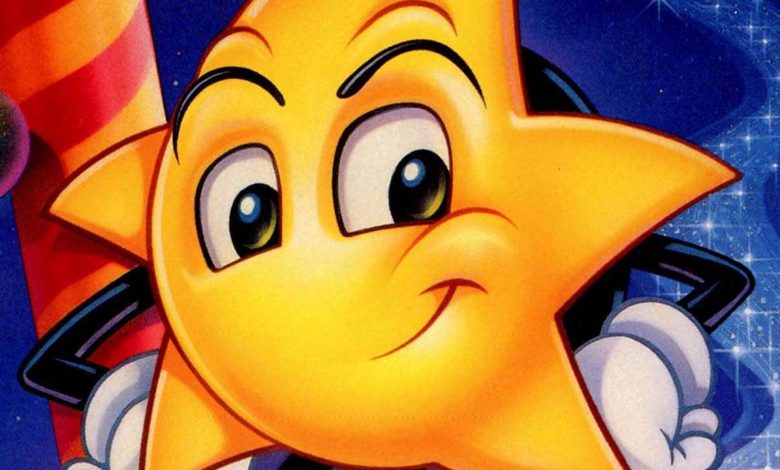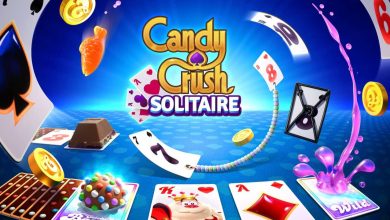Why Ristar Should’ve Been The Genesis’s Mascot, Not Sonic

Ristar is celebrating its 30-year anniversary today, February 16, 2025. Below, we make the case that despite Sonic’s breakout celebrity, Ristar really deserved to be the face of Sega.
It’s fair to say that Mario will likely always sit on the throne as the most iconic video game mascot of all time, but Sonic the Hedgehog certainly gave him a run for his money back in the ’90s. The lovable ‘tude and blistering speed of the Blue Blur made him a cultural figure par excellence in the days of the Super Nintendo and Sega Genesis, and you can even argue that his signature velocity defined the idea of that Sega console in the average gamer’s mind. That said, Genesis fanatics are well aware that Sonic isn’t even the best platform star on his own console. That honor belongs to Ristar, who Sonic kneecapped like a coward 30 years ago so he could stay on the treadmill of producing endlessly mediocre spin-offs with no substance or new ideas.
Okay, that is a bit harsh to Sonic–it’s not his fault that Sega has dropped the ball with his games since roughly the turn of the century, with a few notable exceptions. But while Sonic’s signature speed and beautiful pastel aesthetics never quite made the transition to 3D, mechanics-focused indie platformers similar to Ristar have continued to find an audience, from the gravity flip of VVVVVV to the no-jump gimmick of Yellow Taxi Goes Vroom. In this way, Ristar was a swinging star-man ahead of his time, and it’s unfortunate that Sega didn’t realize that.
For those who aren’t familiar, Ristar is a short but sweet platforming classic released by Sega in the waning days of the Genesis in 1995. You use the lovable mascot’s stretchy arms to grab enemies, climb ladders, swing from bar to bar, and propel yourself through its many colorful worlds. The game features a variety of creative boss fights that culminate with a decisive battle with the cloaked Kaiser Greedy, who has kidnapped Ristar’s father and taken him prisoner.
You’d figure that a first-party Sega game of this quality would at least get a sequel, and that observation gets at the heart of Ristar’s biggest problem: timing. When Sega asked its staff to create a Mario-slaying mascot, Sonic won the day, but there were a lot of ideas left on the drafting table. One of them was “Feel the Rabbit,” a proto-Sonic archetype that was spun out into a goofy-looking cartoon character that eventually became Ristar. By the time the game actually came out, critical and commercial eyes were on the cutting-edge Sega Saturn, which left our dextrous star friend in the lurch.
When I compare classic games like the original Sonic the Hedgehog trilogy and Ristar, I think it’s instructive to look at the gameplay “verbs” that are available to the player. Essentially, what do you actually do in the game? It’s easy to enjoy the style and flow of the original Sonic trilogy, but in terms of verb count, they’re pretty underwhelming: every button is jump, and your roll is nice, but not particularly useful. This is a big part of why Sonic struggled with the transition to the third dimension: besides running and jumping, you don’t do a whole lot in his games.
By contrast, Ristar heavily relies on its one unique mechanic in the form of the grab, but the game maximizes it. You can send those stretchy arms out in eight directions, which makes for engaging combat and greater enemy variety. One of your character’s basic moves is the ability to climb any wall vertically with the right timing, which is difficult to master but oh-so-satisfying when you finally pull it off. It features another memorable mechanic in the form of glowing poles that you swing around to gain momentum, then shoot off in the direction of your choice. Ristar is invincible during the initial surge of speed, but becomes vulnerable when he slows down, so you have to aim him well to avoid taking unnecessary hits.
Both Sonic and Ristar feature artful level design, but I would give our star friend the edge in that category. Ristar’s stages simply brim with creativity; from the pulsing underwater sections of Undertow to the metronome puzzles of the musical planet Sonata, every one of the game’s levels features new twists and mechanics for you to wrap your stretchy mitts around. Ristar has a core element that the Blue Blur only really figured out in Sonic 3: secrets with meaningful rewards. Each level has a hidden treasure that you access through a teleport pole hidden somewhere in the environment; given that Ristar’s stages tend to be multipathed and require vertical thinking, it’s unlikely you’ll find all of them in your first playthrough.
Ristar’s unfortunate timing might have cost it commercial success, but it did give it one key advantage: It got the most mileage possible out of its console. It’s the most complete audiovisual experience on the Genesis, featuring an impressive orchestral soundtrack that rivals anything on SNES, beautiful spritework, and boss designs that feel ripped straight out of a great Saturday morning cartoon. It’s a feast for the senses you won’t forget, especially the highly memorable level transition sequences, where Ristar blasts from planet to planet in a mesmerizing light show while one of my all-time favorite video game tracks plays.
The ultimate argument in favor of Ristar over Sonic is perhaps the most obvious: When’s the last time you really enjoyed a Sonic game? Sure, Sonic was a great piece of marketing, but it took less than a decade for the cracks in his facade to show. When speculating as to what a 3D Ristar game might have looked like, let’s consider the humble grappling hook, perhaps the most ubiquitous gameplay mechanic of the past 10 years. It’s easy to imagine an exploration-focused Ristar with plenty of climbing and grappling, similar to what we see in Jusant, or even Sonic Frontiers. Of course, in today’s indie market, there’s plenty of room for Sega to jump-start a Ristar reinvention in the 2D plane, but this seems relatively unlikely at this juncture. Still, remasters are quite fashionable these days, and it’s definitely a prime candidate for nostalgic Genesis fans.
Sonic may be an indelible piece of ’90s pop culture, but I can’t help but wonder what would’ve happened if Sega had put a little more juice behind a certain cute star rather than narrowly focusing on its golden goose. We’ll never know if Ristar had the same potential to cross over into pop culture, but as far as I’m concerned, there’s no doubt as to what the better game is, and that’s really what matters.
Source link






